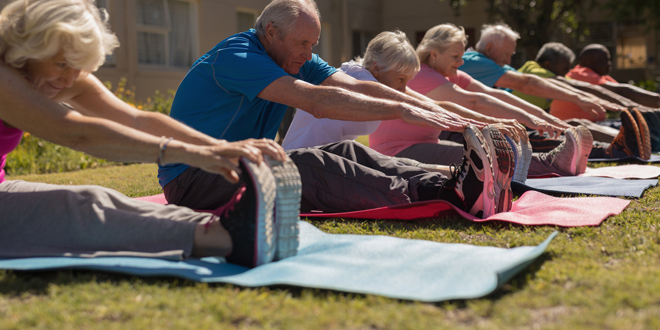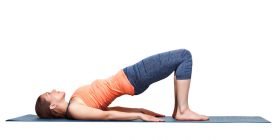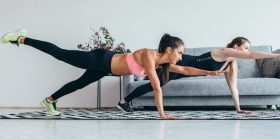Stretching exercises can help prevent or manage diabetes-related joint problems and may even improve blood sugar levels. Find out more about the benefits of stretching and get tips to stretch safely.
Many people think of stretching as something that is done before or after exercise. But stretching is a form of exercise all on its own. The human body was designed for movement, but we often spend hours in static positions. Restriction of movement places the body in an unnatural mode and this can lead to health problems. Studies report that people who stretch have less pain, sleep better and have better cardiovascular health. Stretching increases flexibility, which helps improve range of motion. It also enhances coordination, making falls less likely.
If you have diabetes, there are other important reasons to stretch. People with diabetes have a higher incidence of joint issues – including carpal tunnel syndrome, frozen shoulder, arthritis and limited joint mobility syndrome.
Elevated blood sugar levels cause collagen (the rubbery stuff in joints that helps them move) to become “glycated.” Glycated means coated with sugar. Glycation causes collagen to form sticky nets, causing joints to lose flexibility. Stretching can help break up some of the glycation, thus improving joint mobility. Limited joint mobility can lead to injury and substantially lower quality of life. While blood glucose management is the key to improving limited joint mobility syndrome, daily stretching may help prevent or delay its progression.
Some studies show that stretching can also help improve blood sugar levels in people with type 2 diabetes. It has been suggested that stretching can help improve circulation in the small blood vessels in the muscles and joints, allowing glucose to enter cells more easily.
Daily stretching is strongly recommended to improve health and quality of life.
Safety tips
- Talk to your doctor before making any big changes to your exercise plan.
- Stretching should be done gently and slowly, without bouncing.
- Move into a stretch and stop when you feel tension. Hold the stretch for 15 to 30 seconds. Then relax and repeat the stretch, trying to move a little bit further into it during the second stretch. If you feel pain, you’ve stretched too far.
- Do the stretch on both sides of your body.
- Perform stretches 2 to 4 times.
Different type of stretches you can perform
Neck stretches
- Stand with your feet apart and your knees slightly bent, or sit in a chair with your back straight and your feet on the floor.
- Relax your shoulders and gently bend your head toward your right shoulder.
- For an extra stretch, reach up with your right hand and apply a gentle pressure against the left side of your head in the direction of the stretch.
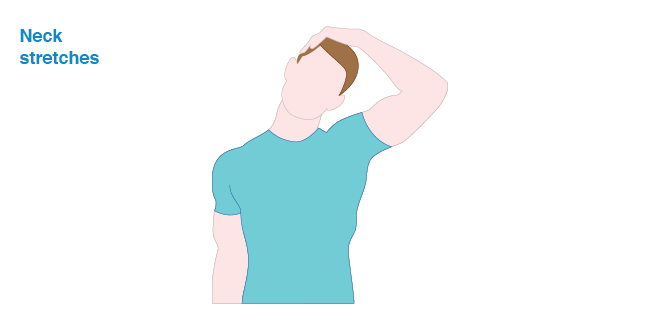
Shoulder/upper back stretches
- Stand with your feet apart and your knees slightly bent, or sit in a chair with your back straight and your feet on the floor.
- Relax your shoulders and pull your right arm horizontally across your chest by grabbing on to your elbow with your left hand.
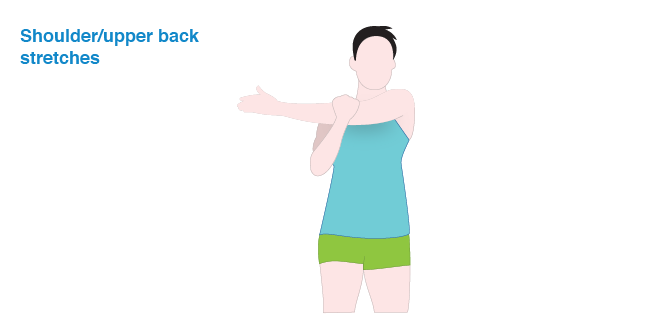
Upper back/triceps stretches
- Stand with your feet apart and your knees slightly bent, or sit in a chair with your back straight and your feet on the floor.
- Bring your right elbow straight up while bending your arm.
- Grab your right elbow with your left hand and pull your right elbow toward your head with light pressure. You will feel the stretch along the back of your arm.
- Keep your spine and neck as straight as possible during this movement.
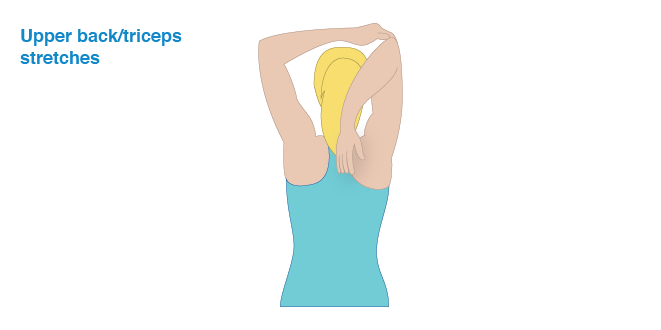
Wrist stretches
- Start with your palms together in front of your chest, just below your chin.
- Slowly lower your hands toward your waistline, keeping your hands close to your stomach and your palms together, until you feel a mild to moderate stretch under your forearms.
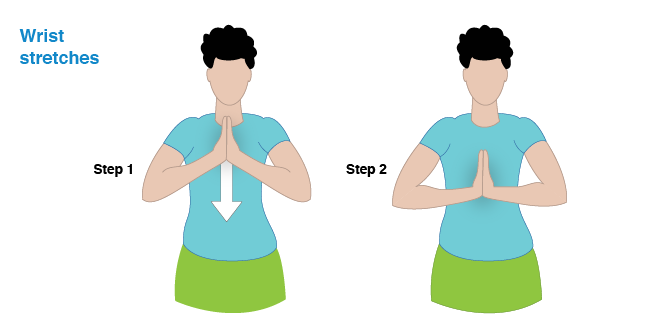
Quadricep (front of thigh) stretches
- Holding on to a chair or the wall with your left hand, grab your right ankle with your right hand by bending at the knee and bring your heel as close as you can toward your bottom (touching it, if possible). Keep your knees beside each other.
- If this causes stress on your knees, do not do this stretch.
- You can also do this stretch by lying on your side with your hand or arm supporting your head. Stretch the leg on top.
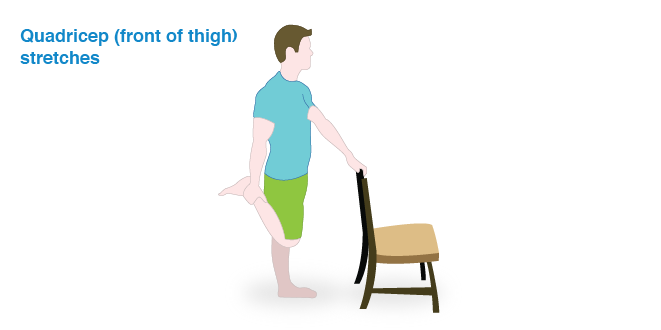
Hamstring (back of thigh) stretches
- Sitting on the floor with your back straight, place your legs in a “V.”
- Bend your left knee and bring your foot in toward your groin area.
- Gently lean out over your right leg to stretch the back of your right thigh (don’t worry if you aren’t able to lean very far). Look forward (not down) to help keep your back straight.

Calf stretches
- Place your hands on a wall for balance.
- Step back with your right leg. Keep the leg straight and press your right heel into the floor. Your left leg will be bent.
- Press your hips forward. You will feel the stretch in your right calf.
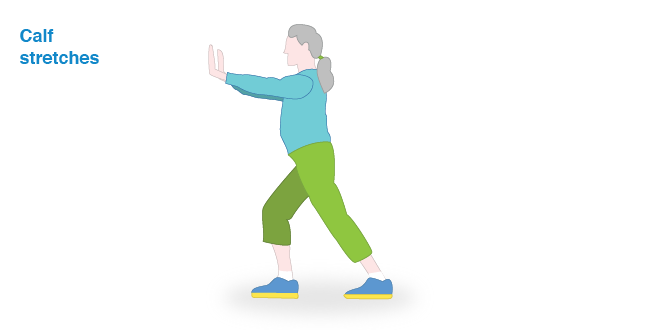
 Diabetes Care Community Learn, connect and care
Diabetes Care Community Learn, connect and care
